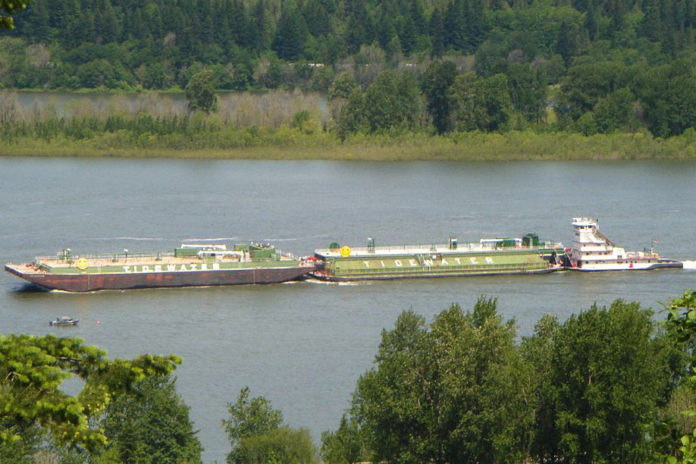
River transportation has a long history on the Columbia and Snake Rivers. From the days of Lewis and Clark to the complex deep draft and inland systems we see today, the movement of goods and people along our rivers has played a key role in our way of life and in the regional economy.
A significant amount of activity goes into how goods are transported in and out of the Northwest. If we follow the movement of grain from the inland empire to the global market, a large portion first moves from farms in Washington, Oregon and Idaho and is put into barges for transit down the Snake and Columbia rivers. Tugboats push four barge tows through eight locks and dams, along a 14-foot deep, 365-mile river highway.
As you drive down I-84 through the Columbia River Gorge, you might see a solo tug with four barges attached and think, ‘how much can that really hold?’ Together, those four barges move as much cargo as one and a half unit trains or 538 trucks. Farmers might look at it in terms of 490,000 bushels or anywhere between 6,500-9,500 acres of wheat. All of that is carried more safely with less carbon emissions than any other mode of transportation.
Shaver Transportation is just one of the tugboat companies that works the inland river, and focuses on moving wheat from upriver grain elevators to one of the six export facilities located on the Lower Columbia. As a sixth-generation family owned business, they are deeply rooted in the region and in the partnerships they have built over their 140 years in operation. Shaver is also one of the only tug companies on the river that can work the inland barges and assist deep draft vessels moving to and from docks along the Columbia River.
When the grain is loaded onto large ships, the tugs help push the vessel from the dock before it moves down the 100-mile deep draft navigation channel to the open ocean. Pilots specially trained in navigational expertise, local knowledge and ship handling guide the vessel downriver and over the Columbia River Bar, one of the most treacherous bar crossings in the world, before it sails overseas to feed the world.
The Northwest benefits from a wide range of passionate experts all throughout the supply chain who help deliver efficient, effective and safe river transportation 365 days a year. And we’re all tied to it in one way or another. From the cars we drive and the grain we farm, to the thousands of industry jobs in our communities, each one of us benefits from the movement of goods on our marine highways and the balance of transportation modes throughout our region.
Heather Stebbings is the Marine Services & Government Liaison for Shaver Transportation Company. She can be reached at hstebbings@shavertransportation.com.


